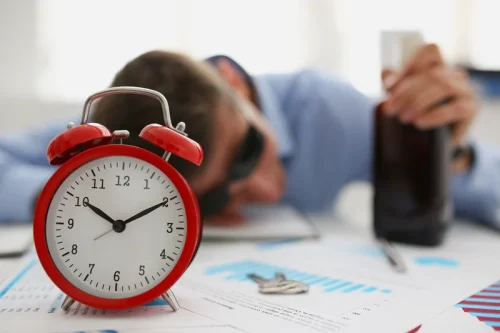
People with OUD may have several physical symptoms of opioid use or withdrawal symptoms. They may also experience psychological symptoms or changes in the way they think and behave. The Substance Abuse and Mental Health Services Administration (SAMHSA) provides a guide for people seeking treatment for substance use disorders. People with OUD can use the guide to complete the necessary steps for effective OUD treatment.

Short-term versus long-term effects

This approach combines therapy and certain medications that reduce cravings and withdrawal symptoms. In addition to efforts that health care providers use to prevent OUD, such as screening for addiction and overdose risk factors before prescribing opioids, you can play an active role in prevention of OUD and OUD relapses for yourself or a loved one. People with untreated OUD often experience social, legal, economic, and health consequences as a result of their opioid use. It is important to remember that OUD is not the result of personal failure or insufficient willpower; it is a brain disease for which effective treatment options are available. Since OUD is a chronic disease, medically managed withdrawal is like treating a heart attack without treating the patient’s underlying heart disease that caused the heart attack.
Does opioid addiction treatment work?

Women also may be more likely than men to become dependent on prescription pain relievers. The drug companies counter that they were filling legal prescriptions written by licensed doctors, who determined the demand for opioids. And they argue that the standard of care for pain treatment changed dramatically in the 1990s and early 2000s, with an emphasis on providing opioids for chronic pain when previously they had been reserved for severe cancer pain and end-of-life care.
How is opioid use disorder treated?
- Although OUD treatment is customized to best fit an individual, treatment programs often use a three-pronged approach to address biological, psychosocial and spiritual issues related to OUD.
- Fifty years ago, heroin users were primarily young adolescent males in minority groups who lived in low-income urban areas.
- Barriers such as not having the drug in stock at the pharmacy, pharmacists questioning the need for a prescription and reduction of refills or number of pills were all cited by cancer patients (ACS CAN, 2018).
- In May, the state announced a plan for prioritizing which groups get the medication from the bulk fund, with four categories, from “essential” to “low need,” based on how frequently an entity directly encounters people who are most at risk of experiencing or witnessing an overdose.
- When an individual suddenly stops using opioids, they can experience a range of symptoms.
Indeed, understanding genetic dispositions—and their interactions with modifiable factors—is an important step toward changing life outcomes. Detailed analyses of these lesions revealed that the disruption of smoking addiction did not depend on whether it involved the anterior or posterior regions of the insula, and it did not matter whether the lesion was on the left or the right side of the brain (Naqvi et al., 2007). Another study found that insular stroke increased odds of quitting smoking (within a year of the stroke) fivefold compared with noninsular stroke (Suner-Soler et al., 2012). Finally, we acknowledge the important role of other brain regions (besides the ventral tegmental area and the nucleus accumbens) critical in the regulation of pain, stress, and reward responses.
Prescription opioids and pain

Remember to never take medication that has been prescribed for someone else. It is most effective in later stages of recovery after someone has stopped using opioids. Suboxone is a medication that combines naltrexone and buprenorphine as part of a structured detoxification program. OUD can impact many areas of a person’s life, including health, relationships, work and much more. With such a broad spectrum, it’s not surprising that OUD can look very different from person to person.
Several studies have found that about half of people who experience a mental health condition during their lives will also experience a substance use disorder and vice versa. In addition, once someone has physical dependence to opioids, the severe withdrawal symptoms create significant motivation to continue using opioids. It typically involves an overpowering drive to use opioids despite consequences, increased opioid tolerance and/or withdrawal symptoms when you stop taking opioids. Opioid use disorder (OUD) is a mental health condition in which a problematic pattern of opioid misuse causes distress and/or impairs your daily life. The opioid epidemic has claimed hundreds of thousands of lives in the United States over the past two decades, devastating families and communities around the country.

- Furthermore, heroin may be cut with additives that do not dissolve in blood vessels and may clog vital organs, causing infection or death of small cells in the organs (NIDA, 2018).
- They’re often used and misused in search for a sense of relaxation or a desire to “switch off” or forget stress-related thoughts or feelings.
- Furthermore, prescribing opioids for acute pain, even minor injuries, is common (Delgado et al., 2018).
- While reasons for initial use of drugs are diverse, only relatively few of those who take drugs recreationally go on to become addicted, in the sense of persistent and potentially near-compulsive levels of craving.
Fifty years ago, heroin users were primarily young adolescent males in minority groups who lived in low-income urban areas. Today, users are more likely to be White, middle-class, either male or female, and in their early 20s (Cicero, Ellis, Surratt, & Kurtz, 2014). Part of this change has been attributed to the marked increase in the abuse of prescription drugs such as oxycodone (Compton & Volkow, 2006; Grau et al., 2007). The perceived risk of prescription drug use is lower than that of signs of opioid addiction illicit substances. People tend to feel that prescription abuse is low risk because doctors and the U.S.
Follow us on social media
Evaluation and identification of the underlying medical and mental health disorders are of the utmost importance in making a definitive diagnosis of OUD. Often, OUD is diagnosed in addition to other substance abuse and mental health disorders. A rise in the prevalence of OUD and opioid deaths lends to the importance of clinicians’ appreciation for the complexity of OUD. OUD typically involves periods of exacerbation and remission, but the vulnerability to relapse occurs throughout a patient’s lifetime.
